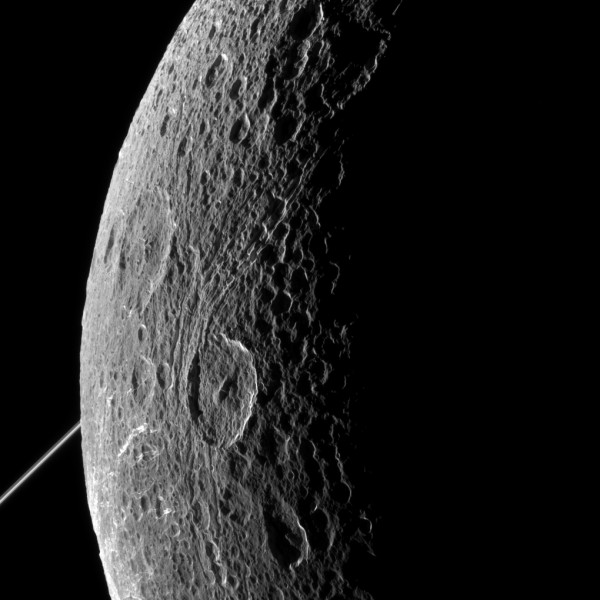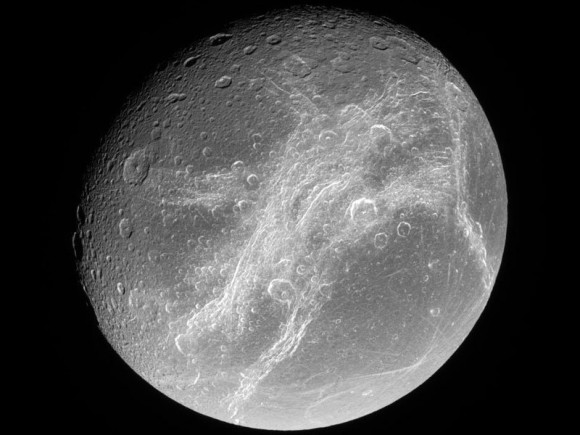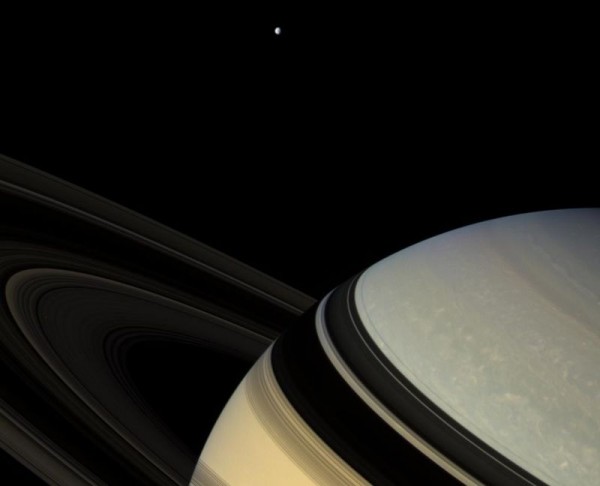
NASA’s Cassini spacecraft made a close flyby of Saturn’s moon Dione on June 16, 2015, its second-to-last close approach before the spacecraft ends its mission next year. The top two images on this page are the result. Aren’t they beautiful?
Cassini came within 321 miles (516 kilometers) of Dione’s surface, making its closest approach at 1:12 p.m. PDT (4:12 p.m. EDT, 2112 UTC) on June 16.
This flyby was the fourth targeted encounter with Dione of Cassini’s long mission. Targeted encounters require a propulsion maneuver to precisely steer the spacecraft toward a desired path above a moon. Cassini’s closest-ever flyby of Dione was in Dec. 2011, at a distance of 60 miles (100 kilometers). The spacecraft will fly past Dione one more time, on Aug. 17, swooping within 295 miles (474 kilometers) of the surface.

During the flyby, Cassini’s cameras and spectrometers observed terrain that includes Eurotas Chasmata, seen in the lower left of the photo at the bottom of this post. The Voyager mission first observed this region 35 years ago as bright, wispy streaks.
Scientists wondered after the Voyager flybys if the bright streaks on Dione were material extruded onto the surface by geologic activity, such as ice volcanoes.
Cassini’s close flybys and sharp vision later revealed the bright streaks to be an intricate network of braided canyons with bright walls, called linea.
However, during this most recent flyby of Dione, Cassini was trying to detect and determine the composition of any fine particles that might be emitted from this region, which could indicate low-level geologic activity. No word on that so far, but stay tuned as the mission team has a chance to analyze the new Cassini images.
View images from Cassini’s final close approach to the moon Hyperion on May 31, 2015
Enjoying EarthSky so far? Sign up for our free daily newsletter today!


In October, Cassini will make two close flybys of the active moon Enceladus, with its jets of icy spray, coming as close as 30 miles (48 kilometers) in the final pass.
In late 2015, the spacecraft will depart Saturn’s equatorial plane — where moon flybys occur most frequently — to begin a year-long setup of the mission’s daring final year.
For its grand finale, Cassini will repeatedly dive through the space between Saturn and its rings.


Bottom line: Cassini’s second-to-last close approach to Saturn’s icy moon Dione was June 16, 2015. See the new Cassini images in this post.











